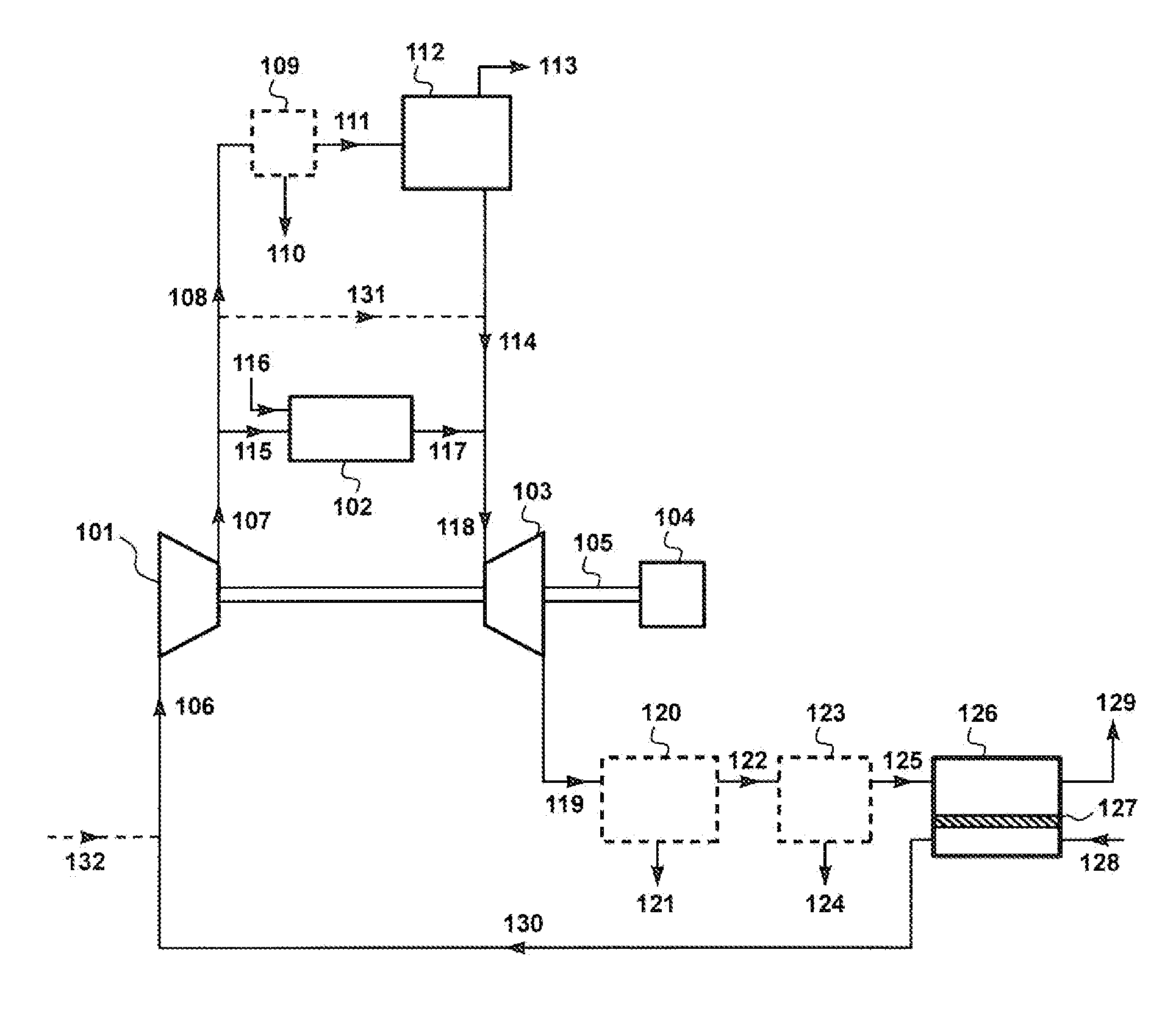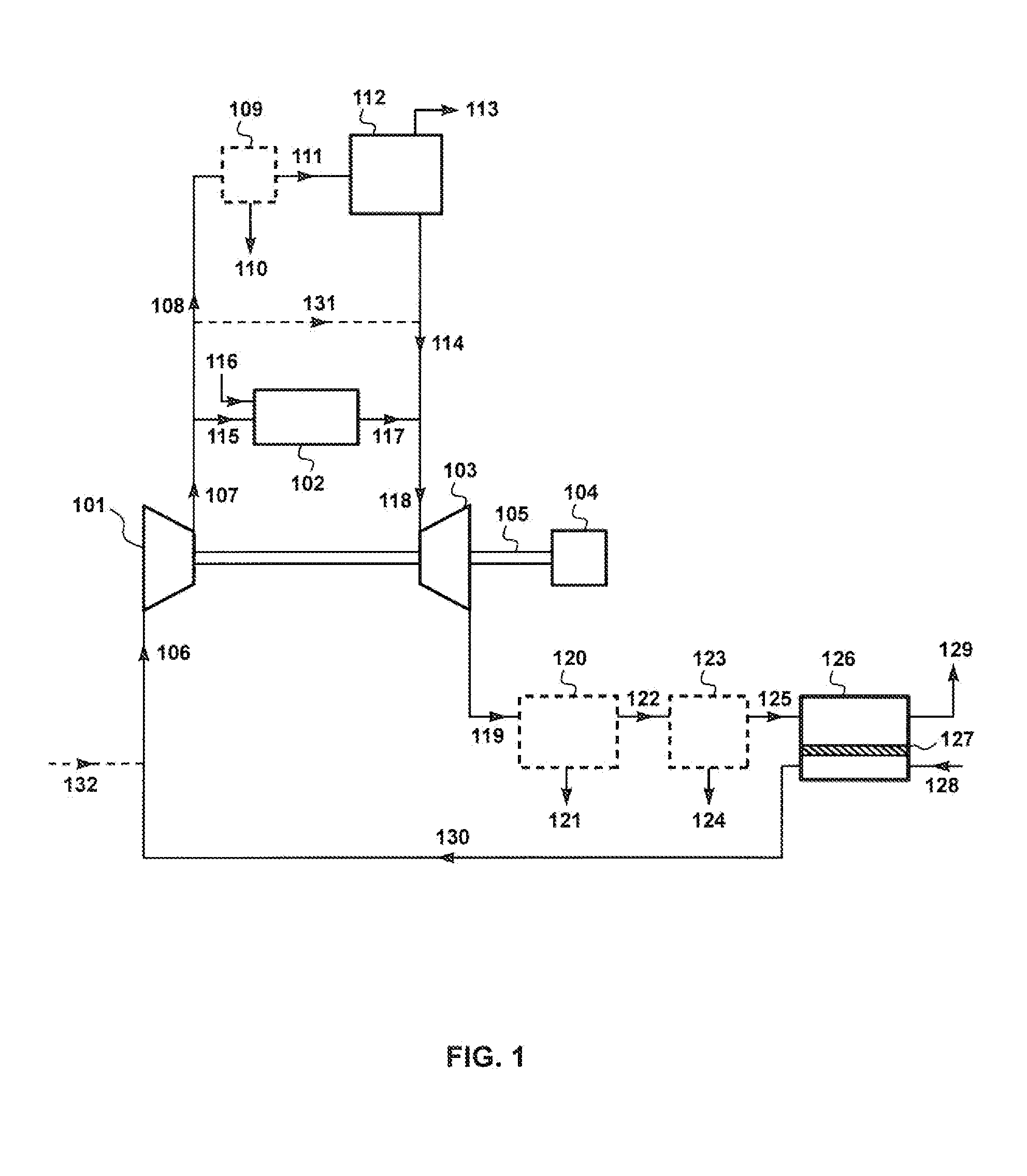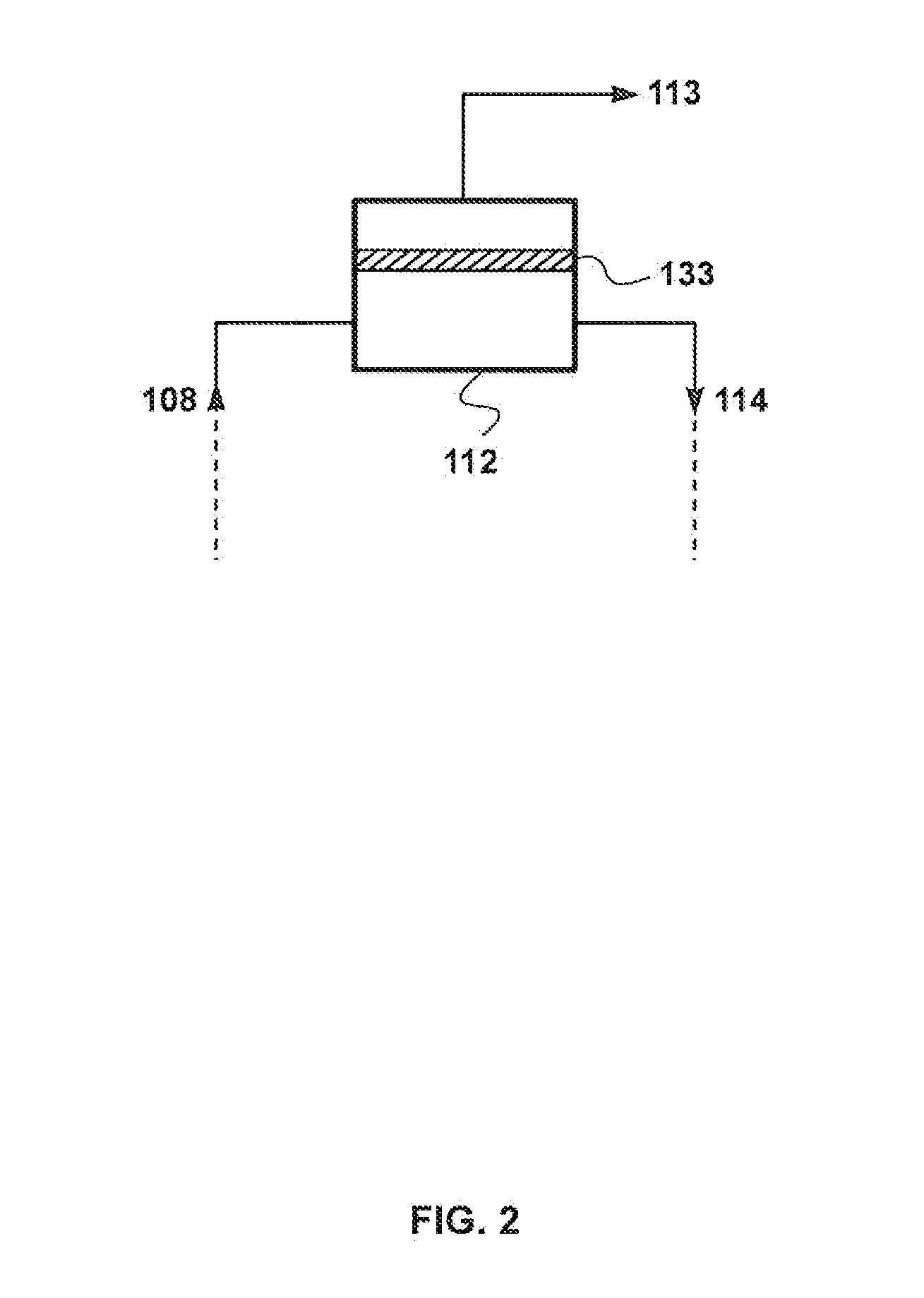Sweep-Based Membrane Gas Separation Integrated With Gas-Fired Power Production And CO2 Recovery
a gas separation and membrane technology, applied in the direction of indirect carbon-dioxide mitigation, machines/engines, electric generator control, etc., can solve the problems of difficult and expensive recovery of carbon dioxide from this dilute gas stream, difficult and difficult to treat, and high temperature of the gas entering the turbine, so as to reduce the environmental impact of the plant
- Summary
- Abstract
- Description
- Claims
- Application Information
AI Technical Summary
Benefits of technology
Problems solved by technology
Method used
Image
Examples
example 1
Polymeric Membrane Permeation Experiments
[0108]Sets of representative permeation experiments were performed with two different composite membranes, each having a polyether-based selective layer. The properties of the membranes as measured with a set of pure gases at 6.7 bar absolute and 30° C. are shown in Tables 1 and 2.
TABLE 1GasPermeance (gpu)*CO2 / Gas SelectivityCarbon dioxide1,000 —Nitrogen2050Oxygen4025Methane5020Water>2,000** —*Gas permeation unit; 1 gpu = 1 × 10−6 cm3(STP) / cm2 · s · cmHg**Estimated, not measured
TABLE 2GasPermeance (gpu)*CO2 / Gas SelectivityCarbon dioxide1,000 —Nitrogen3033Oxygen6017Hydrogen100 10Water5,000** —*Gas permeation unit; 1 gpu = 1 × 10−6 cm3(STP) / cm2 · s · cmHg**Estimated, not measured
example 2
Molten Salt Membranes Used for Gas Separation Step
[0109]A calculation was performed to model the performance of the process of the invention in accordance with the design shown in FIG. 1. The process was assumed to use natural gas as fuel, and to include an HRSG. The fuel and air streams were sized to be consistent with a typical plant producing 500 MWe of power,
[0110]The sweep-based membrane separation step 126 was assumed to be carried out using polymeric membranes having a carbon dioxide / nitrogen selectivity of 50 and carbon dioxide / oxygen selectivity of 25. The membranes were assumed to be optimized to give a carbon dioxide permeance of 5,000 gpu.
[0111]The permeate / sweep air stream was assumed to be compressed to 30 bar, and then split in a 70:30 ratio, with 70% being sent as stream 115 to the combustor and 30% being directed as stream 108 to the carbon dioxide removal step, 112.
[0112]Step 112 was assumed to be carried out using molten salt membranes operating at a temperature o...
example 3
Molten Salt Membranes Used for Gas Separation Step, Permeate Pressure at 2 Bara
[0114]The calculation of Example 2 was repeated, except this time it was assumed that the permeate side of the molten salt membranes was maintained at 2 bara. The results of the calculations are shown in Table 4.
TABLE 4Stream / numberFeed toFeed toSweepCompressorcapturecombustionTurbineMembraneCO2MembraneFuelgasfeedstepstepexhaustfeedpermeateresidue116128106108115119125113129Molar4,38076,587104,60032,02773,220104,82295,6244,93267,610flow(kmol / h)Temp381525523536655255237(° C.)Pressure301130301221(Bara)Component Vol %Oxygen020.715.015.015.16.47.13.010.2Nitrogen1.677.360.660.360.660.566.36.287.6Carbon1.0022.022.221.822.224.391.00.7dioxideMethane93.100000000Water01.01.81.81.810.21.500.5Argon01.00.70.70.70.70.801.0Ethane3.200000000Propane0.700000000n-butane0.400000000
[0115]In this case, the concentration of the carbon dioxide product stream, 113, is 91 vol %, slightly lower than in the previous example. However,...
PUM
| Property | Measurement | Unit |
|---|---|---|
| atmospheric pressure | aaaaa | aaaaa |
| temperature | aaaaa | aaaaa |
| temperature | aaaaa | aaaaa |
Abstract
Description
Claims
Application Information
 Login to View More
Login to View More - R&D
- Intellectual Property
- Life Sciences
- Materials
- Tech Scout
- Unparalleled Data Quality
- Higher Quality Content
- 60% Fewer Hallucinations
Browse by: Latest US Patents, China's latest patents, Technical Efficacy Thesaurus, Application Domain, Technology Topic, Popular Technical Reports.
© 2025 PatSnap. All rights reserved.Legal|Privacy policy|Modern Slavery Act Transparency Statement|Sitemap|About US| Contact US: help@patsnap.com



